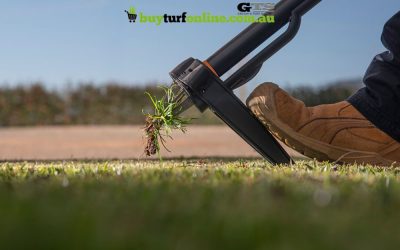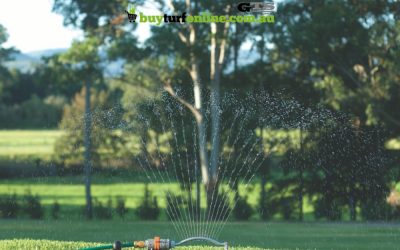Best Fertiliser for Grass in Spring
Quick Links
Fertilising Turf In Spring
Spruce up your lawn by applying the best fertilizer for grass in spring.
As your precious lawn breaks from dormancy, lawn fertilizers can supply the essential nutrients required to boost the growth of grasses and make them look their best.
Lawn fertilization is one of the essential requirements for lawn care.
Apart from adding a soil improver, you also need to apply lawn fertiliser to help the grass grow healthy and maintain its vibrant green colour.
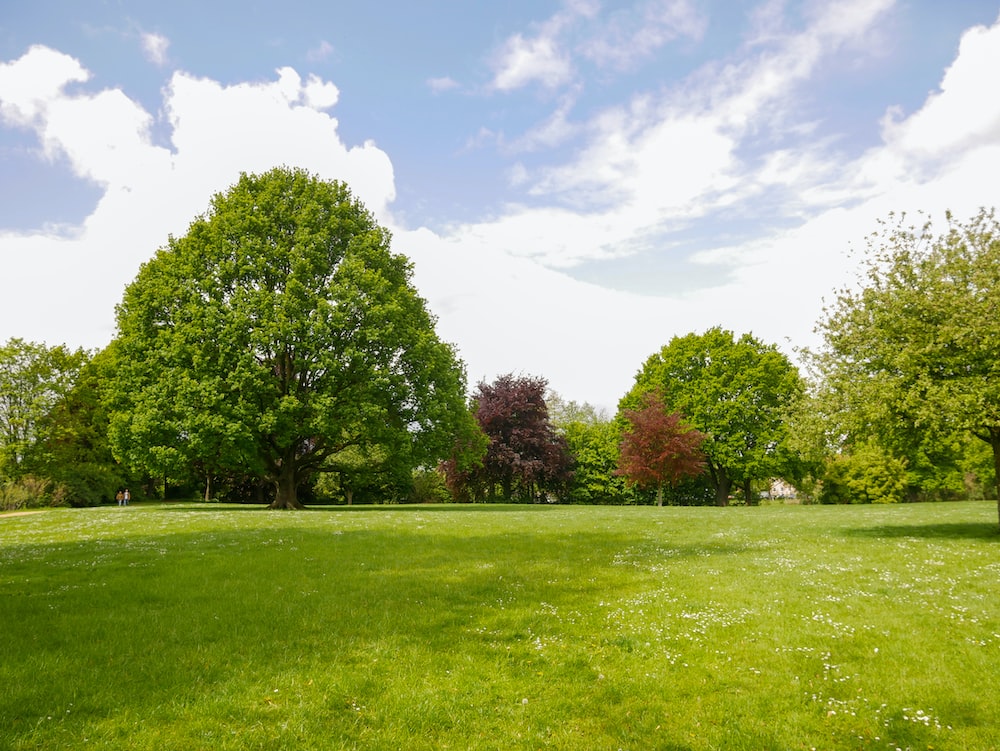
Most lawns that do not look healthy are a result of a lack of fertilization and proper lawn care.
Unfortunately, many homeowners don’t bother about lawn fertilization because they thought it is expensive and time consuming to do.
If you have a lawn and you want to give it a makeover, it’s time to consider lawn fertilization.
The right kind of lawn fertilizer and the right timing of application matter so it’s time to find out more about the best fertilizer for lawns in spring.
Importance of Applying Lawn Fertiliser
It can be a challenging task to keep a healthy lawn. Across Australia, you can find many homeowners relying on the best lawn fertiliser to achieve a healthier lawn.
Over time, the soil in your lawn will lose the natural nutrients that plants need to survive. This is when lawn fertilisers come in.
The best lawn fertiliser will replenish the three key elements in soil, namely nitrate, phosphorous and potassium.
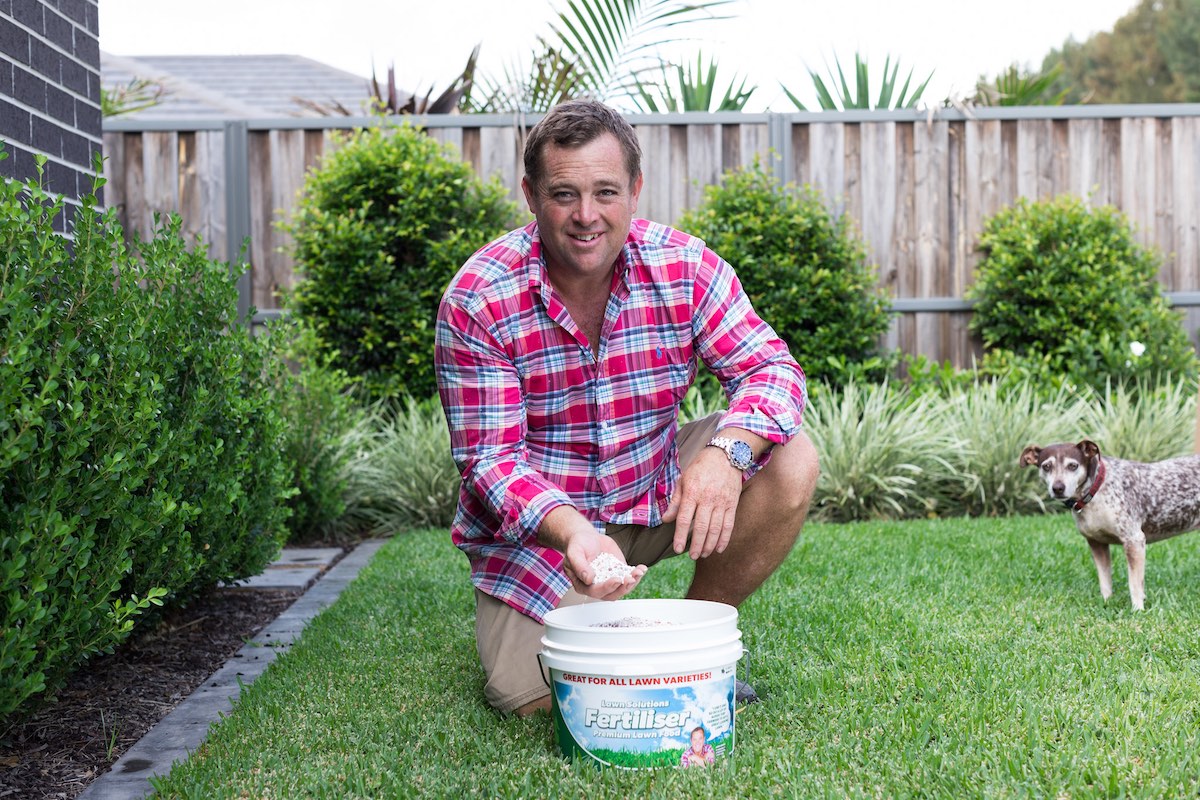
If your soil is deficient in these three elements, your grass and other plants will look shrivelled and brown, unless you apply fertiliser.
The right lawn fertiliser could also boost the growth of grass, especially after they recover from winter dormancy.
Moreover, applying fertiliser is not a complicated task. You can do it yourself or hire a local garden service provider to help you.
If properly done, you can benefit from having vibrant and lush warm-season grass on your lawn.
Best Time to Apply Lawn Fertiliser
You can gain optimum benefits when you apply lawn fertilizer at specific times of the year.
Different factors such as soil type and soil temperatures and irrigation also determine how often and how much lawn fertiliser you need to apply.
Fertiliser application is one of the most essential lawn care techniques during spring. Adding extra nutrients helps grass grows, improves soil quality and encourages new leaf growth after winter dormancy.
While many homeowners apply lawn fertiliser in early spring, the ideal time is mid to late spring.
In early spring, you should give your lawn a chance to slowly wake up from hibernation so that towards the end of spring you can jump-start its growth and promote rapid greening.
It is also recommended to apply lawn fertiliser at other times of the year such as before laying turf, after laying turf, before summer and before winter.

Types of Spring Lawn Fertiliser for Grass
There are different types of spring lawn fertilisers that you can use for grass. Each type has its pros and cons so it’s important to carefully consider each option for the season.
Using the right fertiliser for your lawn is important not only for soil health but also for creating an environment that your lawn can flourish in.
Granular Fertiliser
The granular type of fertiliser is perhaps the most commonly used lawn fertiliser in the country. It is a dry fertiliser that is typically in pellet form.
When you spread slow-release granules of fertiliser on your lawn, over time the granules will break down and this is when the vital nutrients will be transferred to the soil.
Granular fertiliser is systemic, so it needs water to be effective. The extra nutrients provided by this fertiliser are absorbed when the grass absorbs water from the soil.
Moreover, apart from its popular application in lawns, you can also use granular fertiliser in plant pots.
It is a good choice for fertiliser if your area experiences excessive rain, runoff or soil erosion that can result in nutrient loss. Granular fertiliser can help replenish what was lost.
Liquid Fertiliser
A liquid-form fertiliser is any fluid solution that contains minerals and essential nutrients for improved growth.
As grass quickly absorbs liquid nutrients, liquid fertiliser provides instant results but will need to be applied more often.
When you buy a liquid lawn fertiliser, it can fall into any of these categories: water-soluble fertilizer, liquid concentrate fertiliser, and ready-to-use liquid fertiliser.
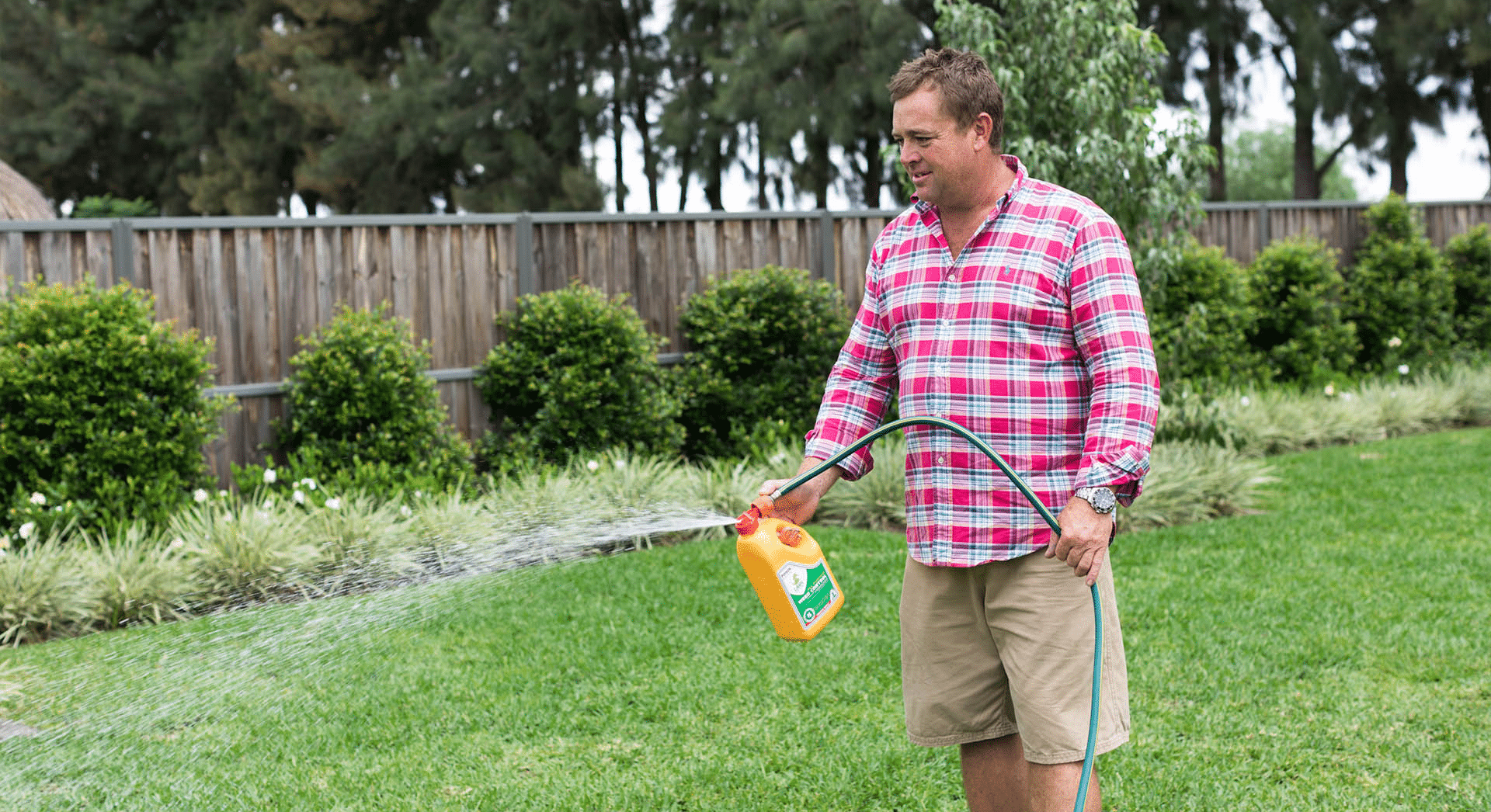
WATER SOLUBLE FERTILISER
Water soluble liquid fertilisers are generally available in powder form that you can easily dissolve in water. It is the least popular option for lawns because there are limited choices for different NPK ratios.
The main advantage of this type of liquid fertiliser is that it is more economical and does not require much storage space.
LIQUID CONCENTRATE
This type of liquid fertiliser typically comes in a bottle of concentrate that you’ll have to mix with water before application.
It is one of the widely used liquid fertilisers as it is more user-friendly and doesn’t require much storage space.
READY TO USE FERTILISER
If you don’t want the hassle of mixing solutions, a ready-to-use fertiliser is a good option.
More often, it comes with a self-contained hose-end sprayer, and all you have to do is attach a garden hose to it so that the fertiliser will be diluted as you water your lawn.
Organic Fertiliser
When it comes to using organic fertiliser, common options include grass cuttings, pasteurized poultry manure, seaweed extract solutions, worm castings and compost among others.
Organic fertilisers provide your entire lawn and other plants with a slow-release nutrient.

Good quality organic fertilisers promote healthy soil and encourage microorganisms that are healthy for the soil.
Aside from providing nitrogen, phosphorus and potassium, organic fertilisers are also a good source of additional nutrients such as calcium, iron and magnesium.
Choosing the Best Spring Lawn Fertiliser
When choosing a spring lawn fertiliser, it’s important to first consider the grass type you have. In Australia, grasses can be either cool-season grasses or warm-season grasses.
Best Lawn Fertiliser for Cool Season Grasses
Cool-season grass types such as Fescues, Ryegrass, Bentgrass and Kentucky Bluegrass can get the optimum benefit from N-rich fertilisers if you apply them starting in late summer until early fall.
However, you should not wait until the ground is already frozen. With the right timing of application, the best fertiliser can greatly enhance soil density, increase drought tolerance, promote green color, and prepare the grass for winter.
The right timing also helps maximize root growth, decreases weed problems, and improves the overall quality of your lawn turf when spring arrives.
Best Lawn FertiliSer for Warm Season Grasses
Many Australians prefer warm-season grass types such as Kikuyu, Buffalo and Couch grasses. As the name suggests, these grasses prefer warmer weather, and they go dormant in the winter.
The best time to fertilise a warm-season lawn is when the lawn starts to emerge from winter dormancy. Look out for signs that the leaves are starting to turn green again.
For established lawns, the most basic requirement is nitrogen and ideally, a slow-release fertiliser. Frequent applications are not required once you started fertiliser application.
However, if your lawn is new, or worse for wear, liquid fertiliser will provide a quick boost to help with recovery after winter.
Helpful Tips for Fertiliser Application in Spring
1. Invest in efficient garden tools and equipment
Tools such as a broadcast spreader help you efficiently distribute fertilisers and other lawn products such as lawn seed, lawn food and weed killer.
A garden fork can also be helpful in spreading organic fertilizers.
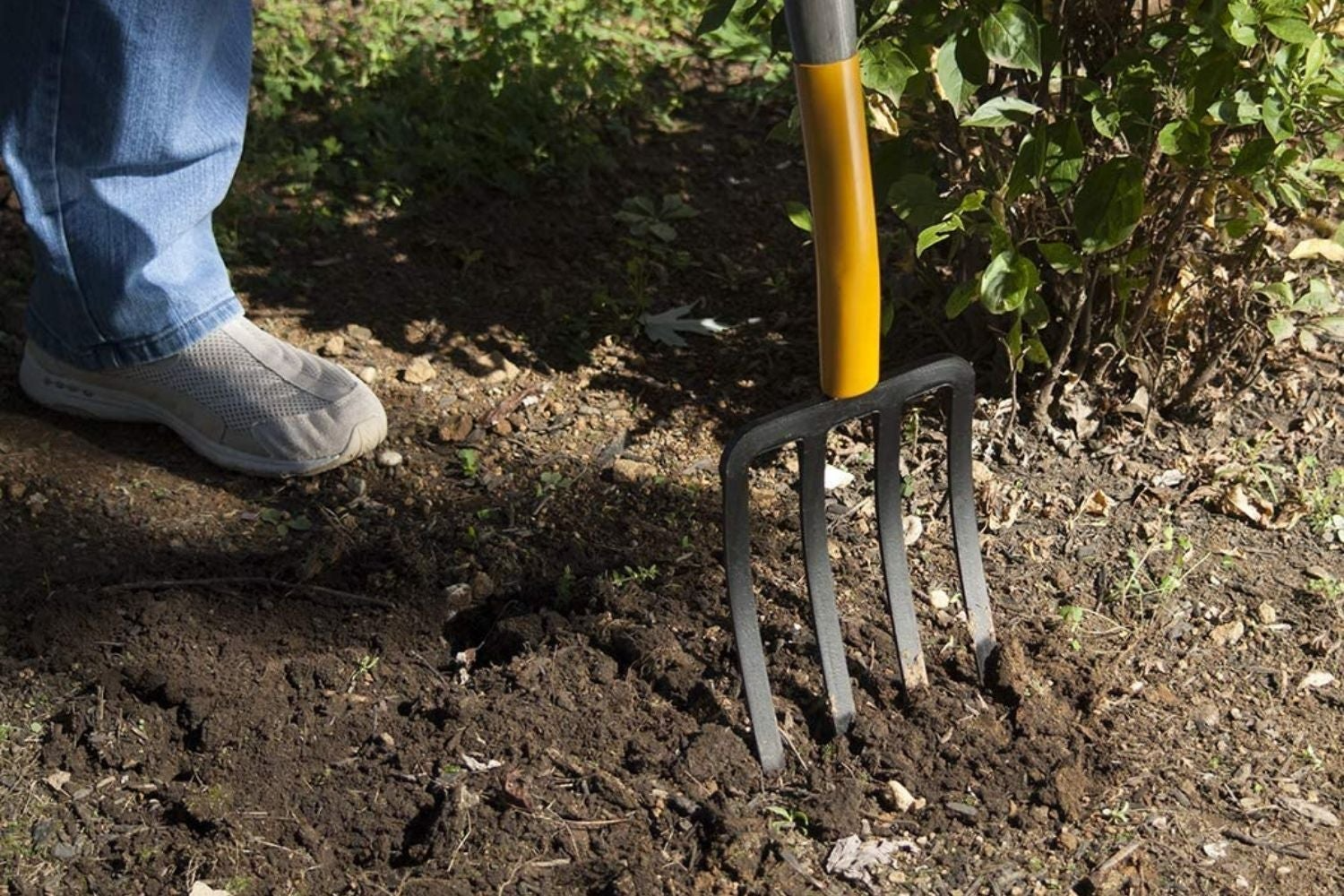
2. When buying fertiliser for spring, you should consider a 20-5-10 mix (20% nitrogen, 5% phosphate and 10% potassium).
The rest of the mix is filler to assist with application and absorption. This will help your lawn with colour and stress and will prevent the germination of weeds.
3. Never forget to water in the fertiliser after you spread it over your lawn.
Crispy grass leaves are never a good look. Moreover, water promotes better soil absorption of nutrients.
By watering your lawn as quickly as possible after applying fertiliser, you will avoid burning your lawn.
4. Be mindful of the colour of the grass
One sign of a healthy lawn is when the grasses have a bright green appearance.
If the leaves are deep to almost blackish-green in colour, it is a sign that they have been heavily fertilised which is not good for your lawn in the long run.
Too much lawn fertiliser causes nitrogen and salt to build up in the soil. This in turn can damage the root structure of the grass, eventually causing death.
5. Apply after and not before heavy rainfall.
Don’t apply fertiliser if there’s a forecasted heavy rainfall in the coming days.
Heavy rainfall could wash away what you have applied before the soil could absorb the nutrients. Instead, schedule fertilisation a day after the rain.
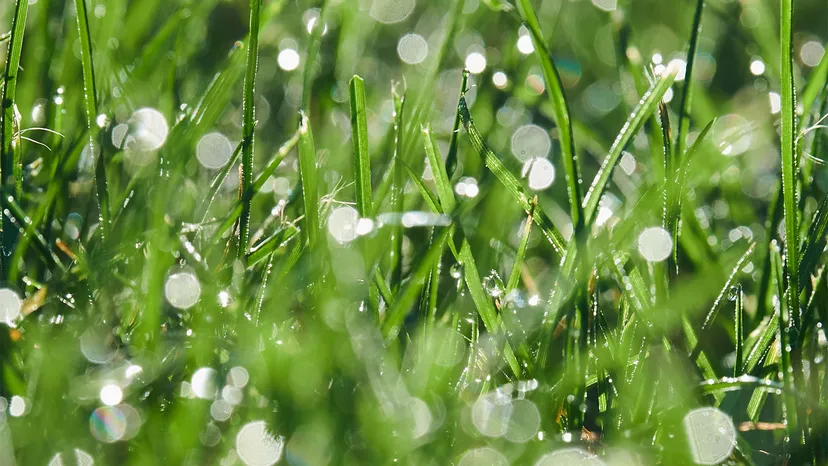
Common Terms You’ll Encounter When Choosing A Lawn Fertiliser
Slow-release Fertiliser
Slow-release fertilisers are those that release the nutrient component slowly until all the granules or pellets are completely dissolved.
As this type of fertiliser slowly dissolves in water, you do not have to apply fertiliser frequently.
One of the advantages of slow release is it stimulates an even distribution of nutrients in the grass.
Because of the even spread of fertiliser, you can also expect an even-paced growth and a smaller requirement for fertiliser over the growing season.
The drawback of slow-release fertilisers is that you won’t see immediate effects.
Quick-Release Fertiliser
This type of fertiliser does what its name says, quickly releasing nutrients to the grass for faster growth. After application, you could almost immediately see the results.
If you have a new lawn, a quick-release fertiliser is an ideal option because it promotes new growth.
It is important to note that excessive application of a quick-release fertilizer may cause rapid growth or strong growth.
When this happens, you’ll have to do mowing sooner than you expect.
Controlled-Release Fertiliser
Commonly known as CRF, a controlled-release fertiliser is also in granular form.
However, unlike regular granular fertilisers, each granule is coated with resin or polymer to restrict contact with water, preventing the immediate release of nitrogen, phosphorus and potassium into the soil.
The release rate varies depending on the thickness of the coating as well the air temperature in your area. The higher the temperature is during the grass growing season, the faster the fertiliser will be released.
CRF is easy to use and it minimises environmental impact because it releases nitrogen and other nutrients at a rate that the grass uses them.
However, its main drawback is that it does not allow for flexibility in the application to meet the specific need of the grass for a specific season.
For example, if you apply around the early spring, late fall or before a long winter when temperatures become unexpectedly too cold or warm, you can no longer adjust how quickly the nutrient release will be.
If too slowly for the temperature, it could cause nutrient deficiency, and if too quickly, root burn.
Lawn Food
Many manufacturers use “fertiliser” and “lawn food” interchangeably on their labels. However, they do have some differences in the formulation.
Lawn food is specifically formulated for your lawn, and products with this label are typically high in nitrogen and not much phosphorus because it is what the grass needs.
Some lawn food also contains pesticides and herbicides to eliminate insects and weeds that cause damage to your lawn.
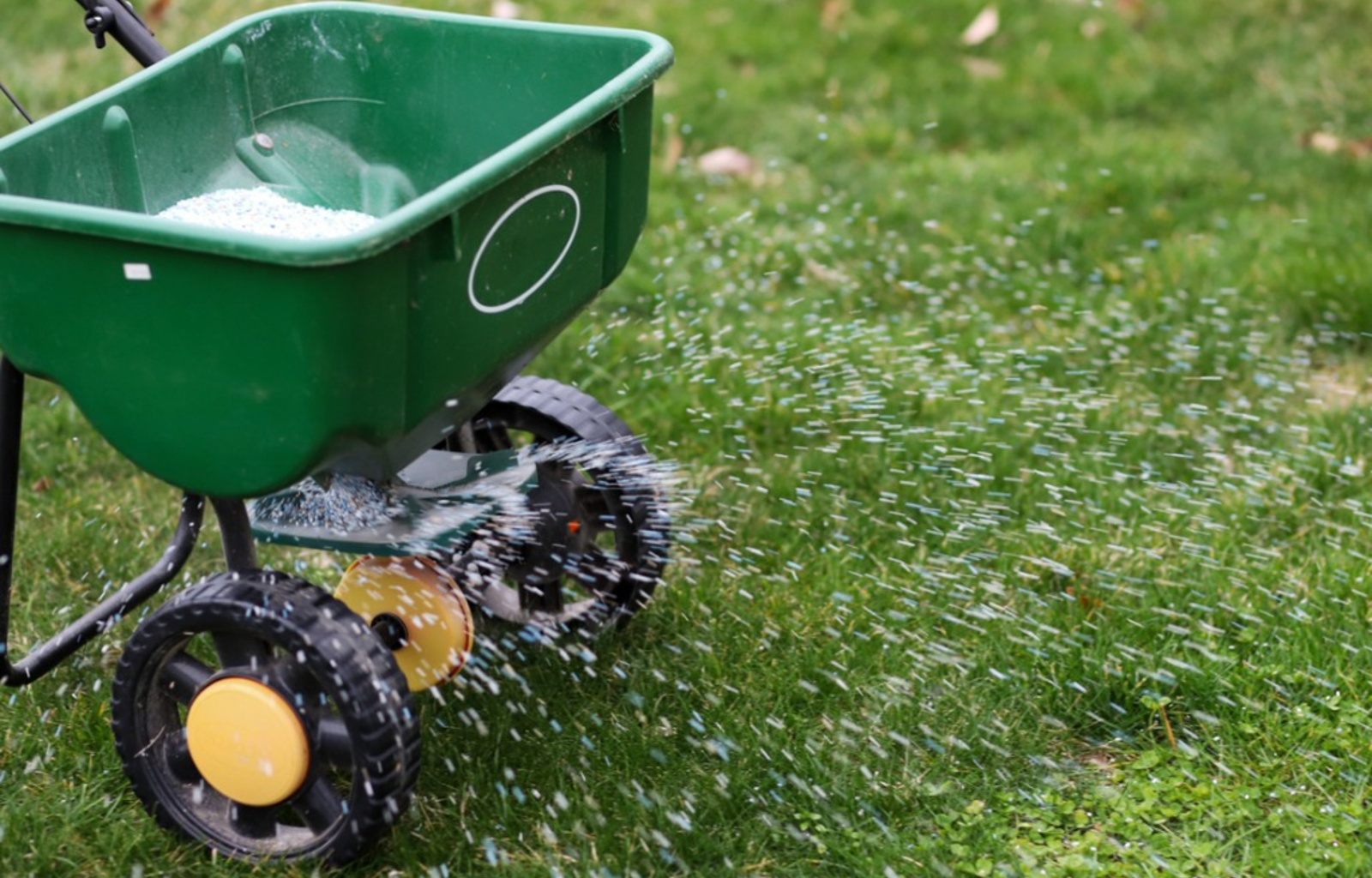
Unlike lawn food, fertiliser is more versatile because you can use it for lawns and other plants.
Fertilisers come with different levels of nitrogen, phosphorous and potassium so that you can choose the formulation that suits your lawn.
For instance, if you have sandy soil, you can choose a slow-release fertiliser with a heavy dose of nitrogen.
But if you have a different type of soil, you may need a fertiliser with a lesser nitrogen ratio.
NPK
In fertiliser packaging, you would most likely see the letters NPK which stands for nitrogen (N), phosphorus (P) and potassium (K).
Each letter is then followed by a number that indicates the ratio of these three elements a particular package contains. N, P and K are the major components of most lawn fertilisers.
Depending on the grass type you have on your lawn, you can choose a specific ratio that best suits your needs.
Wetting Agent
Some fertilisers contain a wetting agent, a solution that attracts water to the surface of the soil to reduce water runoff, helping your lawn to absorb more water in drier climates and seasons.
Wetting agents are usually available in granule or liquid form. Fertilisers that contain a wetting agent are ideal for the dry season or for compacted soil.
Takeaway
Applying fertiliser is part of proper lawn care. Lawn fertilisers are necessary for maintaining consistent and healthy grass growth.
They provide the grass with the nutrients necessary to grow and survive against weeds and diseases.
When choosing the best lawn fertiliser, it’s important to consider the type of soil and grass you have. If you aren’t sure which product to choose, we’re here to help.

read more!
recent posts
Poolside Turf: Choosing and Maintaining Grass Around Pools
There’s nothing quite like stepping out of a swimming pool onto soft, lush grass. But when it comes to finding the best grass for around a pool, not all lawns are created equal. Chlorine pools, heavy foot traffic, and the unforgiving Australian sun can take a toll on...
Keeping Your Lawn Green and Healthy During the Summer Heat
Discover the best grass options for your lawn with our complete guide. Make informed choices for a lush, healthy yard. Read more to find your ideal grass!
Summer Lawn Weeds: Prevention and Management
Discover the best grass options for your lawn with our complete guide. Make informed choices for a lush, healthy yard. Read more to find your ideal grass!
The Ultimate Watering Guide for Summer Lawns
Discover the best grass options for your lawn with our complete guide. Make informed choices for a lush, healthy yard. Read more to find your ideal grass!

Our Turf
TifTuf Bermuda
Buy Turf Online © 2019 All Rights Reserved. | Proudly Designed and Developed by Sydney ICT



